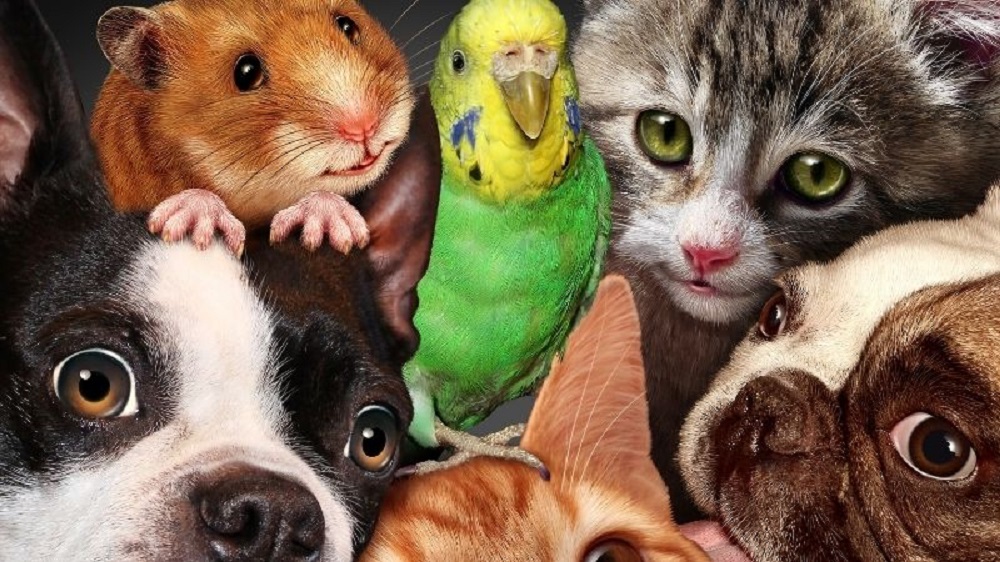Adopting a mascot in Spain is a heartwarming and fulfilling journey that goes beyond merely bringing a pet home. It’s a commitment to providing love, care, and a forever home to an animal in need. This comprehensive guide will delve into every aspect of adopting a mascot in Spain, from understanding the legal requirements to knowing how to care for your new family member.


Estela Cuesta
Estela Cuesta, the author of this blog, is a passionate animal lover from Mexico. Her deep connection with animals fuels her writing, offering insights into pet care and adoption. She knows a lot about adopting a pet in Spain because is where she adopted her little cat.
Table of Contents
- Background: The Heartbreaking Reality of Stray and Abandoned Animals in Spain
- Ignite Your Passion for Spanish with Us!
- The Adoption Process in Spain: A Step-by-Step Guide
- Costs of Adopting a Mascot in Spain: What to Expect
- Time Frame: Patience Leads to the Perfect Pet
Background: The Heartbreaking Reality of Stray and Abandoned Animals in Spain
Spain’s streets, parks, and rural areas are often the unfortunate homes to countless stray and abandoned animals. These creatures, once domesticated and cared for, now find themselves without shelter, food, or love. The conditions they endure are not only harsh but often life-threatening.
The Stray Animal Crisis in Spain
The stray animal crisis in Spain is a complex issue that has roots in various social, economic, and cultural factors. From abandoned pets due to financial constraints to the lack of proper animal control measures, the problem is multifaceted and requires concerted efforts to address.
- Overpopulation: With limited resources to spay and neuter, overpopulation becomes a significant issue, leading to more animals on the streets.
- Lack of Awareness: Many people are unaware of the responsibilities of pet ownership, leading to abandonment when challenges arise.
- Economic Factors: Economic downturns often lead to an increase in abandoned pets as families struggle to provide for their animals.


The Plight of Stray Animals: A Life of Suffering
Stray animals in Spain face a daily struggle for survival. They are exposed to the elements, suffer from malnutrition, and are at risk of disease and injury. The lack of medical care means that even minor ailments can become life-threatening.
- Weather Conditions: Extreme heat in summer and cold in winter can be fatal to animals without shelter.
- Disease and Injury: Without access to veterinary care, stray animals suffer from untreated diseases and injuries.
- Malnutrition: Finding food is a constant challenge, leading to malnutrition and related health problems.


Shelters at Breaking Point: A Cry for Help
Animal shelters and rescue organizations in Spain are doing their best to provide care and find homes for these stray animals. However, they are often overwhelmed with the number of animals in need and the limited resources available.
- Limited Space: Many shelters are at or beyond capacity, struggling to accommodate all the animals in need.
- Financial Strain: Providing food, medical care, and shelter requires significant funding, often relying on donations and volunteers.
- Adoption Challenges: Finding permanent homes for all the animals is a constant challenge, requiring ongoing efforts to promote adoption.
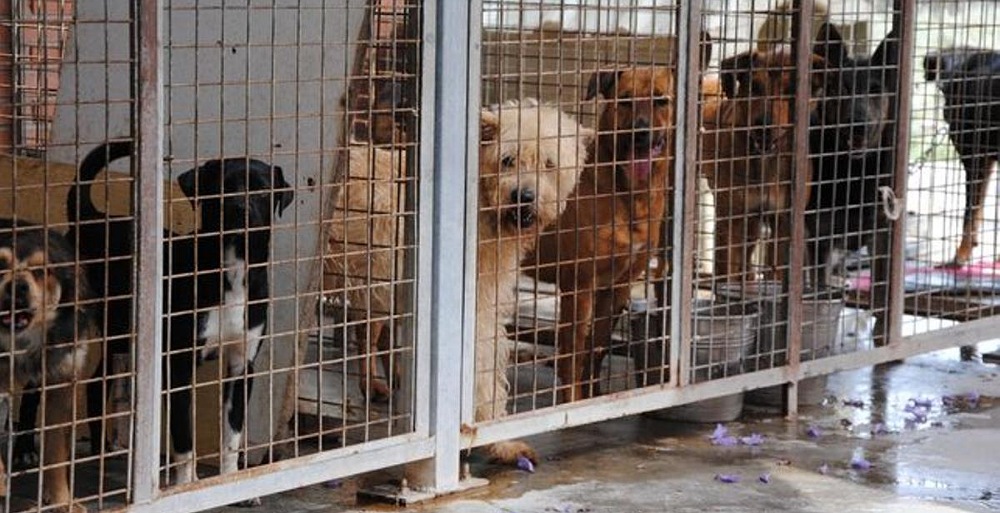

Adopting a Pet in Spain: A Compassionate Response
Adopting a pet in Spain is more than a kind gesture; it’s a life-saving act that provides a stray or abandoned animal with a loving home. It’s a commitment to understanding their needs, providing care, and offering a second chance at a happy life.
- Saving a Life: Every adoption means one less animal on the streets or in an overcrowded shelter.
- Creating Space in Shelters: Adopting frees up space in shelters, allowing them to rescue more animals.
- Building a Bond: Adopted pets often form strong bonds with their new families, providing companionship and joy.


Ignite Your Passion for Spanish with Us!
Are you ready to dive into a new language and immerse yourself in a vibrant culture? Whether you’re dreaming of the bustling streets of Buenos Aires, the sun-soaked beaches of Malaga, or the convenience of learning from the comfort of your own home, we’ve got you covered!


Experience Buenos Aires
Join us at our language school in Argentina. Immerse yourself in the local culture, explore the city’s rich history, and let the rhythm of Buenos Aires fuel your language learning journey.
Discover Malaga
Picture yourself learning Spanish under the warm Andalusian sun. Our Spanish school in Malaga offers a unique blend of high-quality education and a relaxed, beach-side lifestyle. It’s more than just a language course, it’s the adventure of a lifetime!
Learn Spanish Online
If travel isn’t on the cards right now, don’t worry! Our online Spanish classes bring the language to you. Enjoy interactive, engaging lessons with our experienced teachers, all from the comfort of your own home.
The Adoption Process in Spain: A Step-by-Step Guide
Finding the Right Pet in Spain: A Journey to Your Perfect Match
Finding the right pet is the first and perhaps most exciting step in the adoption process. It’s a journey filled with anticipation, joy, and sometimes even a little anxiety. After all, you’re about to choose a new family member, and you want to ensure that the match is perfect. Platforms like Protectapet and various animal shelters and rescue organizations in Spain make this process easier by offering extensive lists of animals available for adoption.
Understanding Your Needs: What Are You Looking For?
Before diving into the search, it’s essential to understand what you’re looking for in a pet. Consider your lifestyle, living situation, and what you can offer to a pet. Here are some factors to consider:
- Size: Do you have space for a large dog, or would a smaller pet be more suitable?
- Energy Level: Are you looking for an active pet that loves to play, or a more laid-back companion?
- Age: Would you prefer a playful puppy or kitten, or a mature and calm adult pet?
- Special Needs: Are you equipped to care for a pet with specific medical or behavioral needs?


Exploring Options: Where to Look?
Platforms like Protectapet offer a convenient way to explore various options from the comfort of your home. Here’s how you can start your search:
- Online Platforms: Websites like Protectapet provide extensive lists of animals available for adoption, including photographs, descriptions, and contact details for the organizations concerned.
- Animal Shelters and Rescue Organizations: Visiting local shelters and rescue organizations can give you a chance to meet potential pets in person.
- Social Media and Community Boards: Many shelters and rescue groups post available pets on social media and community boards, providing another avenue to discover your perfect match.
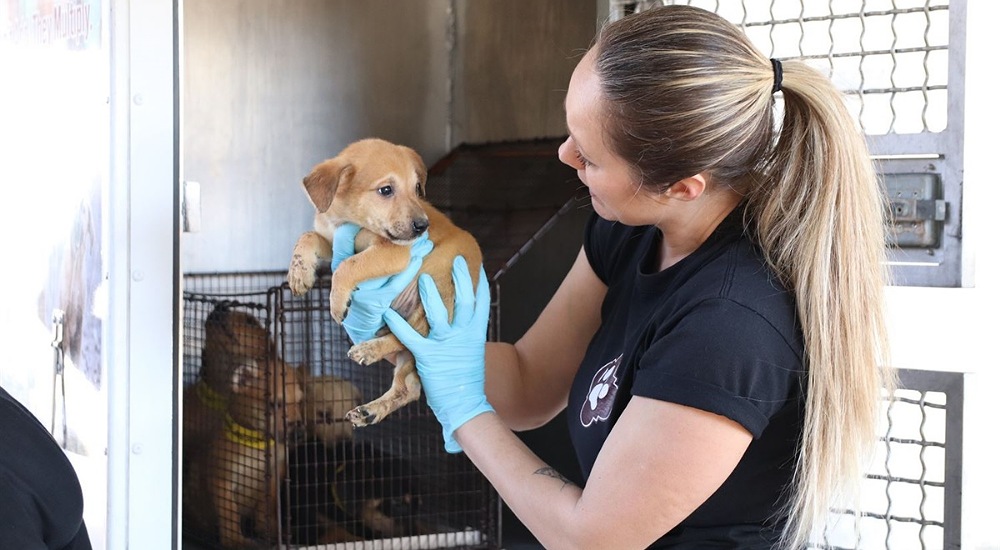

Meeting Potential Pets: Building a Connection
Once you’ve identified potential pets, it’s time to meet them. This step is crucial in determining if there’s a connection and if the pet’s personality aligns with your expectations.
- Schedule Visits: Contact the shelter or rescue organization to schedule a visit. Spend quality time with the pet to gauge compatibility.
- Ask Questions: Don’t hesitate to ask questions about the pet’s history, behavior, medical condition, and any other concerns you may have.
- Observe Interactions: Pay attention to how the pet interacts with you and other family members. Look for signs of comfort, trust, and connection.
Costs of Adopting a Mascot in Spain: What to Expect
Adopting a pet in Spain is a financial commitment that goes beyond the initial adoption fee. While the joy and companionship a pet brings are priceless, it’s essential to understand all potential costs involved. From documentation to vaccinations and ongoing care, being financially prepared ensures a smooth adoption process and a happy life for your new pet.
Initial Adoption Costs: What’s Included?
The average cost of adopting a dog or cat in Spain ranges from €150 – 250. This fee covers various essential aspects of bringing a new pet into your home:
- Documentation: This includes all necessary legal paperwork, such as adoption contracts and pet registration.
- Vaccinations: Most shelters provide initial vaccinations to protect your pet from common diseases.
- Spaying or Neutering: Some shelters include the cost of spaying or neutering in the adoption fee, ensuring responsible pet ownership.
- Health Check: A basic health check is often included to ensure that the pet is in good condition when adopted.


Ongoing Care Costs: A Lifelong Commitment
Adopting a pet is a lifelong commitment, and understanding the ongoing costs is crucial. Here’s what to consider:
- Food and Nutrition: Providing a balanced diet tailored to your pet’s age, size, and health needs.
- Veterinary Care: Regular check-ups, vaccinations, and preventive care, such as flea and tick treatments.
- Insurance: Pet insurance can help cover unexpected medical expenses and provide peace of mind.
- Grooming: Regular grooming, either at home or professionally, keeps your pet clean and comfortable.
- Training: Professional training or obedience classes may be necessary, especially for younger or behaviorally challenged pets.


Unexpected Expenses: Preparing for the Unforeseen
Pets, like people, can face unexpected health or behavioral issues. Being financially prepared for these unexpected expenses ensures that you can provide the necessary care without undue stress.
- Emergency Veterinary Care: Accidents, illnesses, or chronic conditions may require specialized veterinary care.
- Behavioral Therapy: Behavioral issues may require professional intervention and therapy.
- Special Diets or Medications: Some pets may develop the need for special diets or long-term medications.


Time Frame: Patience Leads to the Perfect Pet
Adopting a pet in Spain is not an overnight decision or process. It’s a journey that requires careful consideration, preparation, and patience. The adoption process can vary from 2 to 6 weeks, depending on various factors such as the rescue center’s procedures, the pet’s readiness, and legal requirements. Understanding the timeline and what to expect can help you navigate this exciting journey with ease and confidence.
Initial Inquiry and Application: Starting the Process
The adoption process begins with an initial inquiry and application. This stage involves:
- Research: Finding the right rescue center or shelter that has the pet you’re interested in.
- Initial Contact: Reaching out to the organization to express interest and gather information.
- Application Submission: Completing an adoption application, which may include personal references, living situation details, and your experience with pets.
Home Visit Checks: Ensuring a Safe Environment
Many rescue centers conduct home visit checks to ensure a safe and suitable environment for the pet. This stage may include:
- Scheduling a Visit: Coordinating a time for a representative from the rescue center to visit your home.
- Home Inspection: The representative will assess the living conditions, safety measures, and overall suitability for the pet.
- Discussion: An opportunity to discuss your expectations, ask questions, and understand the pet’s specific needs.


Legal Paperwork and Finalization: Making It Official
Once the home visit checks are satisfactory, the legal paperwork and finalization stage begins:
- Adoption Contract: Signing an adoption contract that outlines the terms and responsibilities of pet ownership.
- Payment: Paying the adoption fee, which covers various initial costs such as vaccinations and documentation.
- Transition Planning: Coordinating the transition of the pet to your home, including any special arrangements or support needed.
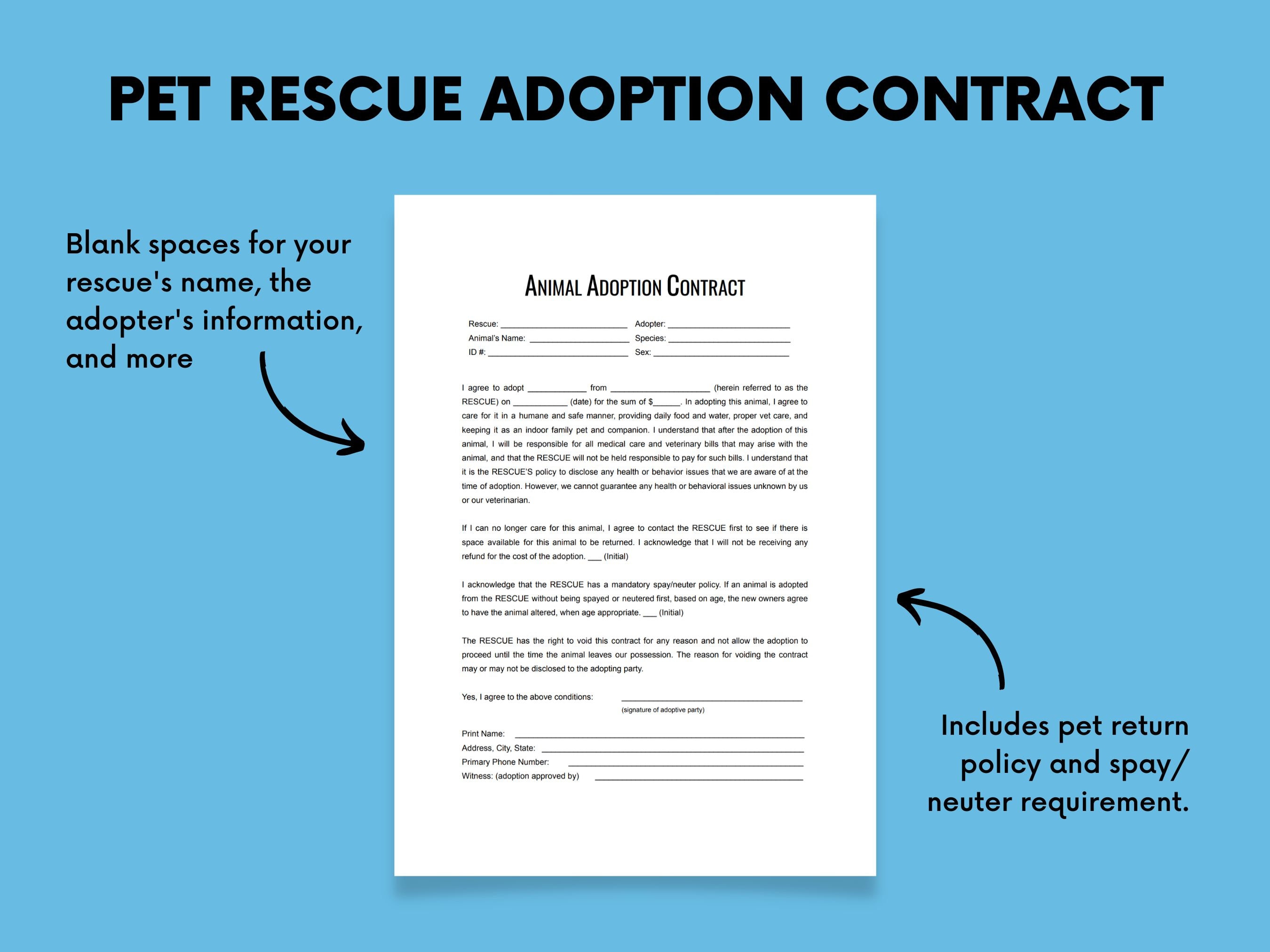

Adjustment Period: Welcoming Your New Family Member
The adoption process doesn’t end when you bring your new pet home. An adjustment period is essential for both you and your pet:
- Settling In: Providing a calm and welcoming environment to help your pet settle into their new home.
- Monitoring: Keeping an eye on your pet’s behavior, eating habits, and overall well-being during the initial weeks.
- Ongoing Support: Many rescue centers offer ongoing support and resources to help with the transition.
Legal Requirements and Considerations: Navigating Spain’s Pet Laws
Laws and Regulations: Understanding Spain’s Pet Ownership Rules
Spain has specific laws and regulations regarding pet ownership that are designed to ensure the welfare of the animals and the safety of the community. These laws cover various aspects, including suitable accommodation, vaccinations, registration, and special considerations for potentially dangerous animals. Understanding and complying with these legal requirements is a vital part of responsible pet ownership in Spain.
Suitable Accommodation: Providing a Safe and Comfortable Home
Pet owners in Spain are legally required to provide suitable accommodation for their pets. This includes:
- Adequate Space: Ensuring enough space for the pet to move freely and comfortably.
- Shelter: Providing shelter from extreme weather conditions, such as heat, cold, rain, or wind.
- Safety Measures: Implementing safety measures to prevent escape or injury, such as secure fencing or indoor enclosures.


Vaccinations and Health Requirements: Protecting Your Pet’s Well-being
Spain mandates specific vaccinations and health requirements for pets, particularly dogs and cats:
- Rabies Vaccination: All dogs, cats, and ferrets must be vaccinated against rabies.
- Health Check: Regular health checks and preventive care, such as deworming, are recommended.
- Pet Passport: If traveling within the EU, a pet passport with up-to-date vaccination records is required.
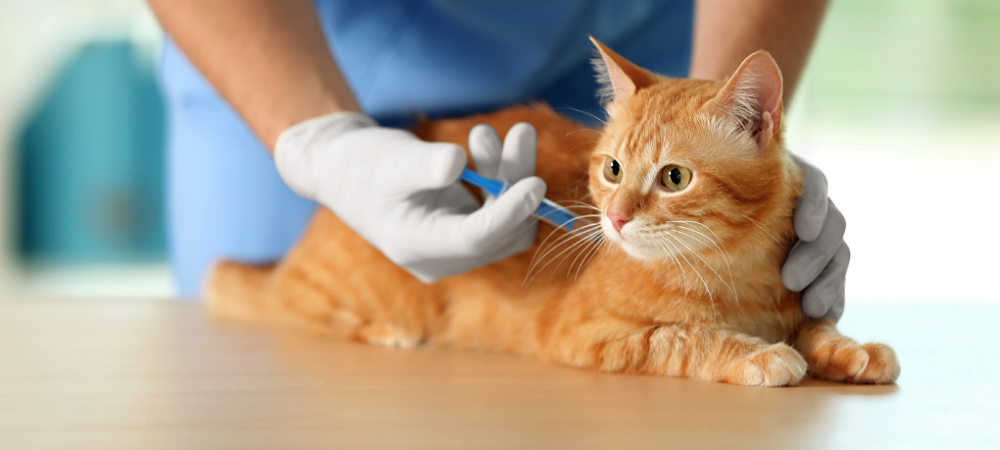

Registration and Identification: Legal Compliance
Registration and identification are essential legal requirements for pet owners in Spain:
- Microchipping: Pets must be microchipped with up-to-date owner information.
- Local Registration: Registration with the local municipality is required, including details of the pet’s breed, age, and health status.
- License for Specific Breeds: Some breeds may require a special license, depending on regional regulations.
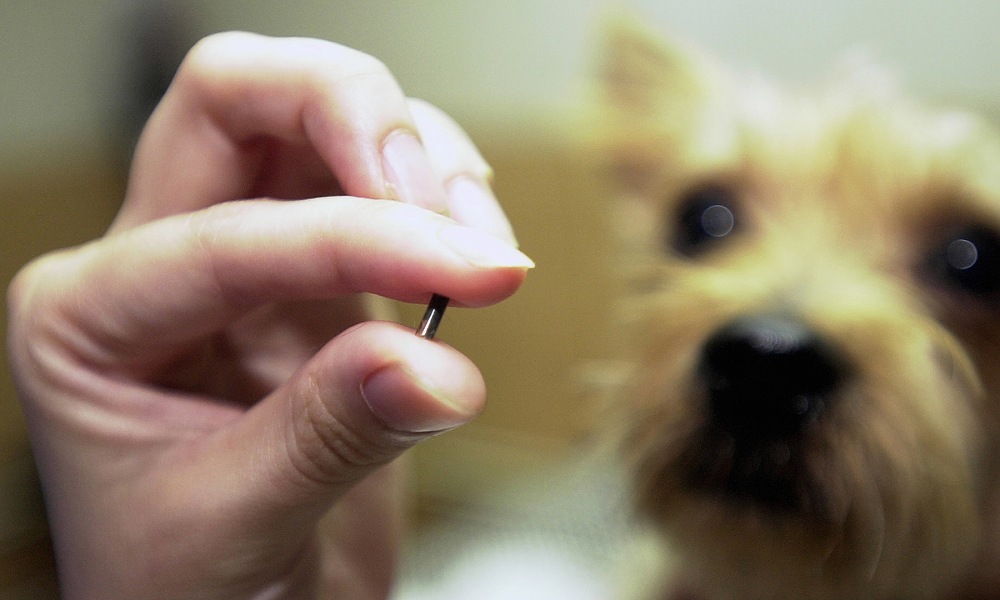

Potentially Dangerous Animals: Special Considerations
Spain has specific regulations for potentially dangerous animals, defined by breed or behavior:
- Registro de Animales Potencialmente Peligrosos: Dangerous animals must be registered on this official registry.
- Special License: Owners of potentially dangerous animals must obtain a special license, demonstrating their ability to handle and care for the animal.
- Insurance: Liability insurance is required to cover potential damages or injuries caused by the animal.


Insurance Considerations: Protecting Your Pet in Spain
Pet care in Spain can be expensive, especially if your pet becomes ill or is involved in an accident. Veterinary bills, medications, surgeries, and ongoing treatments can quickly add up, putting a strain on your finances. Comprehensive pet insurance can prove invaluable in such situations, covering necessary health conditions and providing peace of mind. Here’s a closer look at the importance of pet insurance in Spain and what to consider when choosing a policy.
If you are looking for insurances, this blog may be interesting for you: Guide to Spanish Healthcare System: How to Make an Insurance
The Importance of Pet Insurance: Why Consider It?
Pet insurance is more than just a financial safety net; it’s a responsible choice that ensures your pet receives the best possible care without financial constraints. Here’s why pet insurance is essential:
- Unexpected Illnesses and Injuries: Pets can fall ill or get injured unexpectedly, leading to costly medical treatments.
- Chronic Conditions: Managing chronic conditions such as diabetes or arthritis requires ongoing care and medication.
- Peace of Mind: Knowing that you have financial support for your pet’s medical needs allows you to focus on their well-being rather than worrying about costs.


Types of Pet Insurance: Finding the Right Coverage
Pet insurance policies in Spain vary in coverage, cost, and terms. Understanding the different types helps you find the right policy for your pet:
- Accident-Only Policies: These cover injuries resulting from accidents but not illnesses.
- Comprehensive Policies: These cover both accidents and illnesses, including chronic conditions and preventive care.
- Specialized Policies: Some policies cater to specific needs, such as travel insurance for pets or coverage for potentially dangerous breeds.
What to Look for in a Pet Insurance Policy: Key Considerations
Choosing the right pet insurance policy requires careful consideration of various factors:
- Coverage: Understand what is covered, including specific conditions, treatments, and preventive care.
- Exclusions: Be aware of what is not covered, such as pre-existing conditions or specific breeds.
- Deductibles and Co-Pays: Know the out-of-pocket costs, including deductibles and co-pays, that you’ll be responsible for.
- Reputation: Research the insurance provider’s reputation, customer reviews, and financial stability.
Fostering a Pet in Spain: A Temporary Home with Love
What is Fostering? A Compassionate Alternative
Fostering involves providing temporary care for a pet until a permanent home is found. It’s a vital service that helps shelters and rescue organizations manage their limited resources, offering a lifeline to animals in need. Fostering is more than just a temporary arrangement; it’s a compassionate act that can make a significant difference in an animal’s life. Here’s a closer look at fostering pets in Spain, the benefits, responsibilities, and how you can get involved.
The Role of Fostering: Why Is It Important?
Fostering plays a crucial role in the animal welfare system in Spain, providing essential support to shelters and rescue organizations:
- Easing Shelter Overcrowding: Many shelters in Spain are at or beyond capacity. Fostering helps alleviate this pressure by providing temporary homes for animals.
- Special Care Needs: Some animals require special care, such as young kittens or puppies, injured pets, or those recovering from surgery. Fostering provides a more comfortable environment for healing and growth.
- Socialization and Training: Fostering allows for personalized attention, socialization, and training, preparing pets for successful adoption.
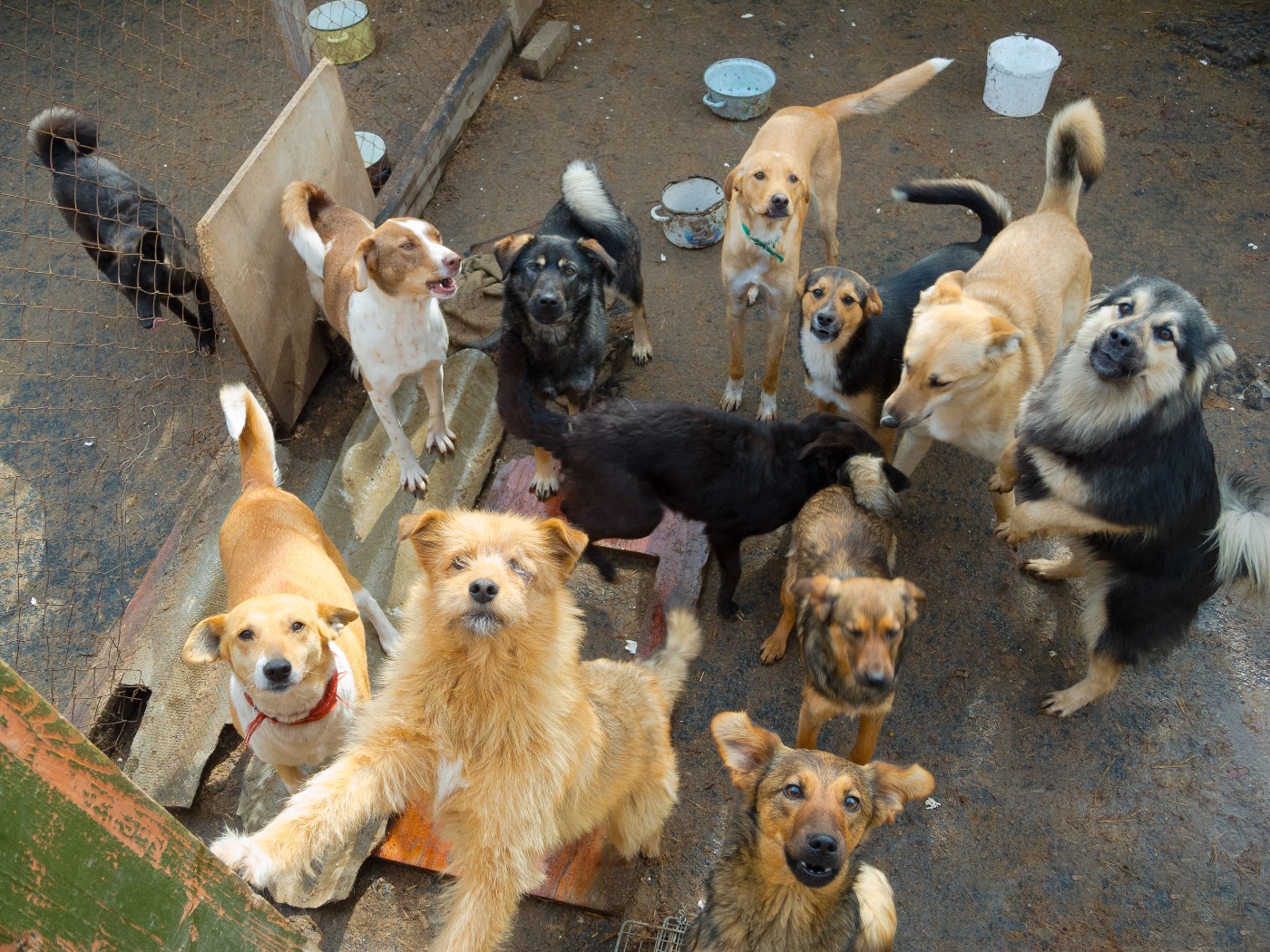

Becoming a Foster Parent: What Does It Involve?
Becoming a foster parent for a pet in Spain is a rewarding experience that comes with responsibilities and commitments:
- Understanding the Commitment: Fostering is temporary but requires time, effort, and emotional investment.
- Providing Basic Needs: This includes food, shelter, and medical care as needed. Some organizations may cover certain expenses.
- Communication with the Shelter: Regular updates and communication with the shelter or rescue organization are essential.
Benefits of Fostering: A Win-Win Situation
Fostering offers benefits to both the animals and the foster parents:
- For the Animals: A loving and comfortable environment, personalized care, and a better chance at finding a permanent home.
- For the Foster Parents: The joy of helping an animal in need, the companionship of a pet without long-term commitment, and the support of the shelter or rescue organization.


How to Get Involved: Steps to Becoming a Foster Parent
If you’re interested in fostering a pet in Spain, here’s how you can get involved:
- Research Organizations: Find shelters and rescue organizations in your area that need foster parents.
- Attend Information Sessions: Many organizations offer information sessions or training for potential foster parents.
- Complete an Application: Submit an application and undergo any necessary checks, such as home visits.
- Stay Committed: Understand that fostering is a temporary arrangement and work closely with the organization to find a permanent home for the pet.
Fostering Pets in Spain: Love, Attention, and Flexibility
Fostering a pet in Spain is a unique and rewarding experience that requires love, attention, and a genuine commitment to the well-being of the animal. It’s a temporary arrangement with the goal of providing a safe and nurturing environment until a permanent home is found. While fostering comes with responsibilities, it also offers flexibility and support from the shelter or rescue organization. Here’s a closer look at what fostering entails, including expenses, duration, and the option to return the foster animal if needed.
Love and Attention: The Heart of Fostering
Fostering is more than just providing a temporary home; it’s about offering love, care, and attention to an animal in need:
- Emotional Connection: Building trust and forming an emotional connection with the foster animal.
- Personalized Care: Understanding the specific needs of the animal, including any medical or behavioral requirements.
- Socialization and Training: Helping the animal develop social skills and positive behaviors, preparing them for a successful transition to a permanent home.
:strip_icc()/reasons-dogs-are-better-than-cats-05-3b558f00df1d4c208141106841e8f579.jpg)
:strip_icc()/reasons-dogs-are-better-than-cats-05-3b558f00df1d4c208141106841e8f579.jpg)
Expenses: What’s Covered by the Shelter?
One of the benefits of fostering is that often the shelter or rescue organization will cover all expenses related to the care of the foster animal:
- Food and Supplies: This includes daily meals, bedding, toys, and other essential supplies.
- Medical Care: Any necessary medical treatments, medications, or veterinary visits are typically covered.
- Support and Guidance: Shelters provide ongoing support and guidance to foster parents, ensuring a positive experience for both the animal and the caregiver.
Duration: How Long Does Fostering Last?
The duration of fostering depends on various factors, including the animal’s needs and the time it takes to re-home them:
- Temporary Nature: Fostering is a temporary arrangement, with the goal of finding a permanent home as soon as possible.
- Variable Time Frame: The duration can vary widely, from a few weeks to several months, depending on the animal’s situation and the re-homing process.
- Ongoing Communication: Regular communication with the shelter helps manage expectations and ensures a smooth transition when a permanent home is found.
Flexibility: Returning the Foster Animal if Needed
Fostering offers flexibility, recognizing that circumstances can change:
- Open Communication: If challenges arise or if the arrangement is no longer feasible, open communication with the shelter is essential.
- Returning the Animal: You can always return the foster animal to the shelter if needed, without judgment or penalty.
- Continued Support: Even if the fostering arrangement ends, shelters often provide continued support and assistance as needed
Adopting a Stray Dog or Cat: A Humane Act in Spain
The Stray Situation: Spain’s Unseen Pet Population
Stray pets are a common sight in many parts of Spain, roaming the streets, parks, and rural areas. These animals often live in challenging conditions, without proper care, shelter, or nourishment. Adopting a stray pet is a humane act that can transform a life, providing a loving home and a chance for a better future. However, this noble endeavor comes with specific legal requirements and responsibilities that must be followed. Here’s a comprehensive guide to understanding the process of adopting stray pets in Spain and the legal considerations involved.
The Reality of Stray Pets in Spain: A Growing Concern
The presence of stray pets in Spain is a complex issue with various underlying causes:
- Overpopulation: Lack of spaying and neutering contributes to the growing number of stray animals.
- Abandonment: Economic challenges, lifestyle changes, or behavioral issues may lead to pet abandonment.
- Lack of Resources: Shelters and rescue organizations often struggle with limited resources to care for the increasing number of stray pets.
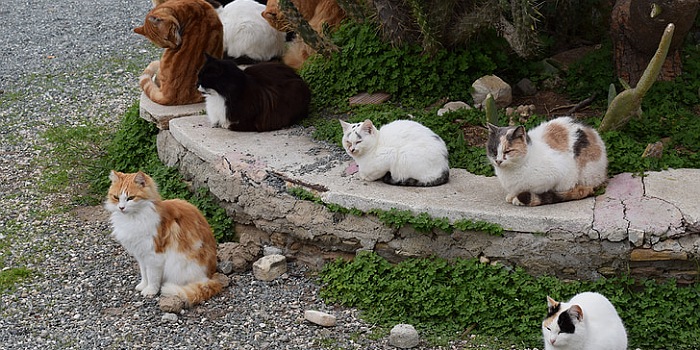

Adopting a Stray Pet: A Compassionate Choice
Adopting a stray pet is a compassionate choice that offers numerous benefits:
- Saving a Life: Providing a stray pet with a permanent home can save them from a life of hardship and danger.
- Improving Animal Welfare: Adoption helps reduce the strain on shelters and contributes to overall animal welfare.
- Personal Fulfillment: The bond formed with a rescued stray pet can be deeply rewarding and fulfilling.
Legal Requirements for Adopting Stray Pets: What You Need to Know
Adopting a stray pet in Spain is not as simple as taking the animal home. Specific legal requirements must be followed:
- Reporting the Find: If you find a stray pet, you must report it to the local authorities or animal control.
- Health and Safety Checks: The animal may need to be examined by a veterinarian to ensure they are healthy and free from contagious diseases.
- Microchip Scanning: If the animal has a microchip, efforts must be made to locate the original owner.
- Legal Adoption Process: If the original owner cannot be found, you must follow the legal adoption process, including paperwork, fees, and compliance with local regulations.


Legal Process: How to Legally Adopt a Stray Pet in Spain
Stray pets are a prevalent issue in Spain, and the process of adopting one involves specific steps and legal considerations. One of the critical aspects of this process is taking the stray pet to a local pound or animal shelter, where they must be held for 5 to 7 days to allow original owners to claim them. Following this period, legal adoption can proceed. Here’s a comprehensive guide to understanding this process and the responsibilities involved.
Finding a Stray Pet: Initial Steps and Responsibilities
If you find a stray pet in Spain, there are immediate actions to take:
- Report the Find: Notify local authorities, animal control, or a nearby animal shelter.
- Safety Considerations: Approach the animal with caution and ensure both your safety and the animal’s well-being.
- Transport to a Shelter: If possible, take the stray pet to a local pound or animal shelter, where professionals ca⁶n care for them.
Holding Period: Allowing Original Owners to Claim
Once at the shelter, the stray pet must be held for a specific period to allow original owners to claim them:
- 5 to 7 Days Holding Period: This mandatory period varies by region and is designed to give original owners a chance to locate and reclaim their pet.
- Microchip Scanning: The shelter will scan for a microchip to identify the original owner and make efforts to contact them.
- Care and Observation: During this time, the shelter provides care, medical attention if needed, and observes the animal’s behavior and health.


Legal Adoption Process: After the Holding Period
If the original owner does not claim the stray pet within the holding period, legal adoption can proceed:
- Adoption Application: Interested adopters must complete an application and meet specific criteria, such as providing a suitable home.
- Adoption Fees: There may be fees associated with adoption, covering vaccinations, spaying or neutering, and administrative costs.
- Legal Paperwork: The adoption must be formalized through legal paperwork, ensuring compliance with local regulations and laws.
- Post-Adoption Support: Many shelters offer post-adoption support, including training resources, veterinary care information, and ongoing assistance.
Care and Maintenance: A Lifelong Commitment to Your Mascot in Spain
Understanding Your Pet’s Needs: Building a Happy Relationship
Understanding your pet’s needs is crucial for fostering a happy and healthy relationship. Whether you’ve adopted a pet from a shelter, re-homed an animal, or brought a new pet into your family, knowing their medical history, age, personality, and behavior issues is essential. Regular interaction, playtime, and attention to their preferences will not only ensure their well-being but also foster a strong and lasting bond. Here’s a comprehensive guide to understanding and meeting your pet’s needs in Spain.
Knowing Your Pet: Medical History, Age, Personality, and Behavior
A deep understanding of your pet’s background and characteristics is the foundation of a successful relationship:
- Medical History: Familiarize yourself with your pet’s medical history, including vaccinations, previous illnesses, allergies, and any ongoing treatments.
- Age Considerations: Knowing your pet’s age helps tailor care, nutrition, and exercise routines to their life stage.
- Personality Insights: Understanding your pet’s personality, likes, dislikes, and quirks helps create a comfortable and stimulating environment.
- Behavior Issues: Identifying and addressing any behavior issues, such as anxiety or aggression, requires patience, training, and possibly professional assistance.


Regular Interaction and Playtime: Building a Strong Bond
Regular interaction and playtime are vital components of a fulfilling pet relationship:
- Quality Time: Spending quality time with your pet, engaging in activities they enjoy, strengthens your connection.
- Mental and Physical Stimulation: Playtime provides essential mental and physical stimulation, promoting overall health and happiness.
- Positive Reinforcement: Using positive reinforcement techniques during play and training encourages desired behaviors and builds trust.
Attention to Preferences: Respecting and Responding to Your Pet’s Needs
Paying attention to your pet’s preferences and responding to their needs enhances their well-being:
- Dietary Preferences: Understanding and accommodating your pet’s dietary preferences and nutritional needs is essential for their health.
- Comfort and Safety: Creating a comfortable and safe living environment that aligns with your pet’s preferences fosters contentment.
- Communication and Understanding: Learning to recognize and respond to your pet’s signals and communication cues ensures their emotional well-being.


Healthcare Plans: Ensuring Wellness for Your Pet in Spain
Healthcare is a vital aspect of pet ownership, ensuring that your pet remains happy, healthy, and well-cared-for throughout their life. In Spain, healthcare plans, such as those offered by Protectapet, cover various health conditions and can save you money on vet bills and medication. Regular check-ups, vaccinations, and preventive care are essential components of your pet’s well-being. Here’s a comprehensive guide to understanding pet healthcare in Spain and the options available.
Healthcare Plans: Coverage and Benefits
Investing in a healthcare plan for your pet offers numerous benefits:
- Comprehensive Coverage: Plans like Protectapet offer coverage for various health conditions, including illnesses, injuries, and chronic conditions.
- Cost Savings: By providing savings on vet bills and medication, healthcare plans make essential care more affordable.
- Peace of Mind: Knowing that your pet’s healthcare needs are covered provides peace of mind and allows you to focus on their well-being.
Regular Check-Ups: Monitoring Your Pet’s Health
Regular veterinary check-ups are a cornerstone of responsible pet ownership:
- Health Assessments: Regular check-ups allow veterinarians to assess your pet’s overall health, detect early signs of issues, and provide timely interventions.
- Personalized Care: Veterinarians can tailor care and recommendations based on your pet’s age, breed, lifestyle, and specific needs.
- Building a Relationship: Regular visits help build a relationship between your pet, you, and the veterinary team, enhancing trust and communication.


Vaccinations and Preventive Care: Essential for Well-Being
Vaccinations and preventive care play a crucial role in protecting your pet’s health:
- Vaccination Protocols: Keeping up with recommended vaccinations protects your pet from contagious diseases and fulfills legal requirements in some cases.
- Preventive Measures: Regular preventive care, such as flea and tick control, dental care, and heartworm prevention, safeguards your pet’s well-being.
- Education and Guidance: Veterinarians provide valuable education and guidance on preventive care practices, helping you maintain your pet’s health at home.
Ongoing Care: Nurturing Your Adopted Mascot in Spain
Long-term care for pets is a multifaceted responsibility that goes beyond basic needs. It includes regular check-ups, a balanced diet, exercise, love and attention, and much more. It’s a lifelong commitment that requires time, effort, and resources, all aimed at ensuring a happy, healthy, and fulfilling life for your pet. Here’s a comprehensive guide to understanding long-term care for pets in Spain and the essential components involved.
Regular Check-Ups: Monitoring Health and Preventing Issues
Regular veterinary check-ups are a vital part of long-term care:
- Ongoing Health Assessments: Regular visits to the vet allow for ongoing monitoring of your pet’s health, early detection of issues, and preventive care.
- Tailored Recommendations: Veterinarians provide personalized care plans based on your pet’s age, breed, lifestyle, and specific needs.
- Chronic Condition Management: For pets with chronic conditions, regular check-ups ensure proper management and treatment.
Balanced Diet and Exercise: Foundations of Physical Well-Being
A balanced diet and regular exercise are foundational to your pet’s physical well-being:
- Nutritional Needs: Providing a balanced diet that meets your pet’s nutritional needs supports overall health, energy levels, and weight management.
- Exercise Routines: Regular exercise, tailored to your pet’s age and abilities, promotes physical fitness, mental stimulation, and behavioral balance.
- Hydration and Special Diets: Ensuring proper hydration and accommodating special dietary needs are essential aspects of long-term care.


Love and Attention: Emotional Well-Being and Connection
Love and attention are integral to your pet’s emotional well-being and connection with you:
- Quality Time: Spending quality time with your pet fosters a strong bond and provides emotional support.
- Mental Stimulation: Engaging in interactive play, training, and mental challenges keeps your pet mentally stimulated and content.
- Understanding and Compassion: Recognizing and responding to your pet’s emotional needs enhances their happiness and trust.
Safe Environment, Proper Training, and Mental Stimulation: Comprehensive Care
Providing a safe environment, proper training, and mental stimulation are key components of comprehensive long-term care:
- Safe Living Spaces: Creating a safe and comfortable living environment minimizes risks and ensures your pet’s security.
- Training and Behavior Support: Proper training and behavior support promote good manners, socialization, and a harmonious relationship.
- Mental Engagement: Providing toys, puzzles, and opportunities for exploration encourages mental engagement and satisfaction.
Re-homing Your Pet: A Responsible Guide in Spain
Reasons for Re-homing: When Life Changes
Re-homing a pet is a difficult decision that may become necessary due to various factors, such as changes in living situations, personal circumstances, or the inability to provide adequate care. It’s a responsible choice that prioritizes the well-being of the pet, ensuring they find a suitable new home where their needs can be met. Here’s a comprehensive guide to understanding the reasons for re-homing pets in Spain and the process involved.
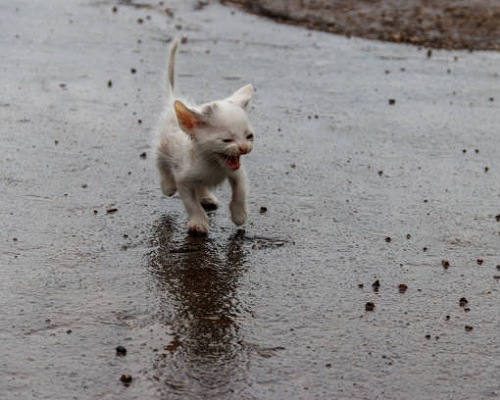

Reasons for Re-homing: Why It May Become Necessary
Re-homing a pet is not a decision taken lightly. Several factors may lead to this challenging choice:
- Assessing the Situation: Understanding the specific reasons for re-homing and determining if alternatives, such as training or temporary care, are possible.
- Finding a Suitable Home: Identifying a new home that meets the pet’s needs, including compatibility with the new family, living conditions, and lifestyle.
- Transition Planning: Preparing the pet for the transition, including gradual introductions, sharing medical records, and providing essential information about the pet’s habits and preferences.
- Legal Considerations: Ensuring compliance with any legal requirements, such as transfer of ownership documents or microchip information updates.
The Process of Re-homing: A Responsible Approach
Re-homing a pet requires careful planning, consideration, and a responsible approach:
- Assessing the Situation: Understanding the specific reasons for re-homing and determining if alternatives, such as training or temporary care, are possible.
- Finding a Suitable Home: Identifying a new home that meets the pet’s needs, including compatibility with the new family, living conditions, and lifestyle.
- Transition Planning: Preparing the pet for the transition, including gradual introductions, sharing medical records, and providing essential information about the pet’s habits and preferences.
- Legal Considerations: Ensuring compliance with any legal requirements, such as transfer of ownership documents or microchip information updates.
Support and Resources: Seeking Professional Assistance
Re-homing a pet can be an emotional and complex process. Seeking professional assistance and support can help:
- Animal Shelters and Rescue Organizations: Many shelters and rescue organizations offer re-homing assistance, providing guidance and helping find suitable new homes.
- Veterinarians and Behaviorists: Consulting with professionals can provide insights into the pet’s needs and potential solutions to challenges.
- Online Platforms: Some online platforms specialize in pet re-homing, connecting potential adopters with those seeking to re-home their pets.
Safe Re-homing Guide: Ensuring Your Pet’s Well-being in Spain
Re-homing a pet is a significant decision that requires careful planning, consideration, and a commitment to the well-being of the animal. It’s not merely about finding a new home but ensuring that the transition is handled with empathy, responsibility, and adherence to ethical practices. This includes keeping the pet at home while searching for a new adopter, advertising through reputable channels, and charging a re-homing fee to deter unethical practices. Here’s a comprehensive guide to understanding this careful and considerate approach to re-homing pets in Spain.
Keeping the Pet at Home: A Compassionate Transition
One of the essential aspects of re-homing is keeping the pet at home during the search for a new adopter:
- Maintaining Stability: Keeping the pet in a familiar environment minimizes stress and anxiety during the transition.
- Personal Involvement: By being personally involved in the re-homing process, you can ensure that the pet’s needs and preferences are understood and met.
- Gradual Introduction: Allowing for gradual introductions to potential adopters helps assess compatibility and ensures a smoother transition.
Advertising Through Reputable Channels: Finding the Right Adopter
Finding the right adopter is a critical step in the re-homing process, and advertising through reputable channels is vital:
- Utilizing Trusted Platforms: Using reputable websites, social media groups, and community networks that specialize in pet re-homing ensures a targeted and responsible approach.
- Working with Shelters and Rescue Organizations: Collaborating with local shelters and rescue organizations can provide access to experienced adopters and additional support.
- Clear Communication: Providing detailed information about the pet’s personality, medical history, and specific needs helps potential adopters make informed decisions.
Support and Resources: Seeking Professional Assistance
Charging a re-homing fee is a common practice that serves several purposes:
- Deterrence: A reasonable re-homing fee can deter individuals with unethical intentions, such as reselling or using the pet for harmful purposes.
- Commitment: The fee signifies a level of commitment from the adopter, indicating seriousness and responsibility.
- Supporting Transition Costs: The fee may cover expenses related to the transition, such as veterinary checks, grooming, or essential supplies.
Adopting a mascot in Spain is a rewarding experience that requires careful consideration, understanding, and commitment. This guide provides all the information you need to make an informed decision and provide a loving home for a deserving pet. Consider adopting today and make a positive difference in an animal’s life.
